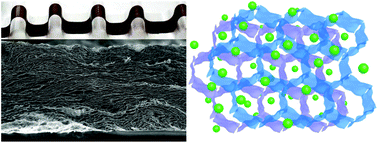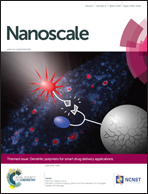Wet-spun, porous, orientational graphene hydrogel films for high-performance supercapacitor electrodes†
Abstract
Supercapacitors with porous electrodes of graphene macroscopic assembly are supposed to have high energy storage capacity. However, a great number of “close pores” in porous graphene electrodes are invalid because electrolyte ions cannot infiltrate. A quick method to prepare porous graphene electrodes with reduced “close pores” is essential for higher energy storage. Here we propose a wet-spinning assembly approach based on the liquid crystal behavior of graphene oxide to continuously spin orientational graphene hydrogel films with “open pores”, which are used directly as binder-free supercapacitor electrodes. The resulting supercapacitor electrodes show better electrochemical performance than those with disordered graphene sheets. Furthermore, three reduction methods including hydrothermal treatment, hydrazine and hydroiodic acid reduction are used to evaluate the specific capacitances of the graphene hydrogel film. Hydrazine-reduced graphene hydrogel film shows the highest capacitance of 203 F g−1 at 1 A g−1 and maintains 67.1% specific capacitance (140 F g−1) at 50 A g−1. The combination of scalable wet-spinning technology and orientational structure makes graphene hydrogel films an ideal electrode material for supercapacitors.


 Please wait while we load your content...
Please wait while we load your content...